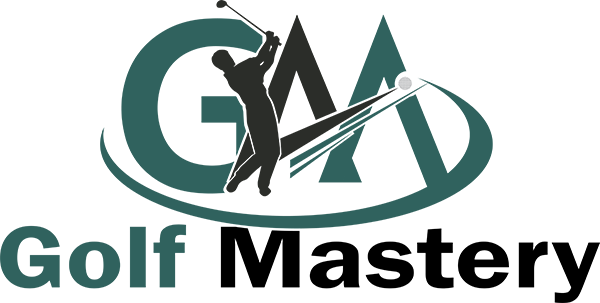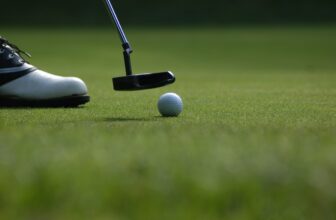So, what is the difference between golf slice and hook?
The difference between a slice and a hook is simple: one curves left, while the other goes right. However, as with anything in golf, multiple factors can cause either type of error a golfer may have trouble thinking through all their options when deciding which club to use because they’re looking at the ball rather than where it’ll end up landing after impact!
Slice Vs Hook In Detail
Slice
A slice is a type of golf shot that occurs when your ball comes off the clubface with sidespin if you are a right-hander and the ball goes off to the right, usually into the rough. And it is a left to right sidespin if you are a left-hander and the ball goes off to the left.
There are different types of slicing:
– The most common is when the clubface is open relative to the path of the swing.
– When the path of the swing is outside-in, but the clubface is square or closed.
– When the path of the swing is inside-out and the clubface is square or closed
– When both the path and clubface are open.
The most common cause of a slice is an open clubface at impact, but it can also be caused by having an outside-in swing path. A slice can also be caused by a combination of an open clubface and an outside-in swing path.
Hook
If you are a right-hander, a hook is a type of golf shot where your ball comes off the clubface with a spin to the left, usually into the rough. If you are left-handed, it will be right to left sidespin and the ball will go off to the right.
There are different types of hooks
– The most common is when the clubface is closed relative to the path of your swing
– When the path of your swing is inside-out, but the clubface is square or open
– When both the path and clubface are closed
The most common cause of a hook is a closed clubface at impact, but it can also be caused by having an inside-out swing path. A hook can also be caused by a combination of a closed clubface and an inside-out swing path.
How can you correct a slice?
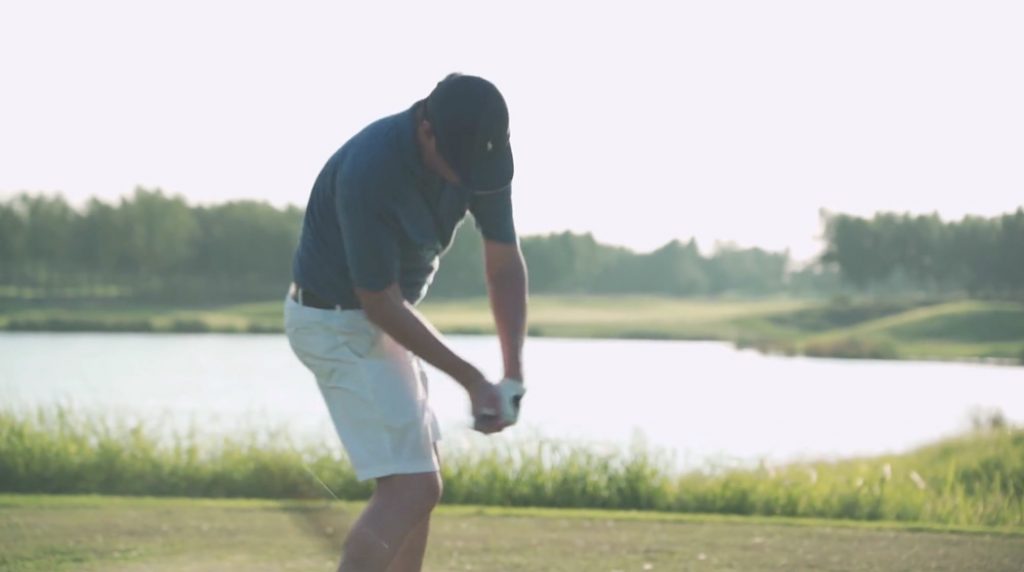
There are a few things you can do to correct a golf slice.
First, check your grip. Make sure that you are not gripping the club too tightly. You should be able to hold the golf club in your hand without your knuckles turning white.
Second, make sure that you are not swinging too hard. Swinging too hard is a common cause of a golf slice.
Third, try to relax your grip even more and focus on hitting the golf ball with the sweet spot of the golf club.
Fourth, adjust your shoulder position so that it is pointing towards the hole. This will help you
keep your swing on the plane.
Fifth, focus on making a smooth swing. A smooth swing will help you hit the ball with more accuracy and prevent you from slicing the ball.
Correct Your Grip Slicers
If you find that your grip is too weak when slicing, try strengthening it just a bit.
You don’t need to go overboard, but try to see two knuckles at the address instead of only one. This will give you better control of the club head and make it easier to hit the ball squarely.
If you’re struggling with a slice in golf, try correcting your swing path.

Don’t let your arms break down. Keep the space between your arms and torso! The one-piece takeaway is the perfect start to a golf swing – hit more solid shots instead of slicing your driver. Tip: It’s important to have a square golf stance if you want to hit straight shots instead of the dreaded golf slice.
Check your stance with an aiming stick or another golf club. Set up for the shot, then place it next to your feet. Back away and evaluate your stance.
Is the club or aiming stick going perpendicular to your target or is there an angle?
If the angle of your feet, hips, and shoulders are open to the target, then you can make a level swing across your body which will help reduce side spin on the ball.
Right handed golfer
How to stop slicing a driver or iron’s practice with swing alignment. Remember a slice in golf is a ball that curves away from the player’s dominant hand. So for a right-handed golfer, a ball that curves to the right.
The key word here is “curves”. A ball that curves right is a push and is caused for different reasons. A golf slice is a poor shot for several reasons. It causes a huge loss in distance and generally misses to the right of the target.
A fade on the other hand is a much more controlled shot that curves slightly left for a right-handed golfer, and is often used by professional golfers to avoid obstacles on the course.
There are two main causes of a golf slice: an open clubface at impact, or an out-to-in swing path. An open clubface means the face of the club is pointing to the right of the target.
An out-to-in swing path is when the golf club approaches the ball from the outside and then swings across the ball to the inside. This causes the face of the club to be open at impact as well.
The best way to stop slicing the ball is to work on these two main causes.
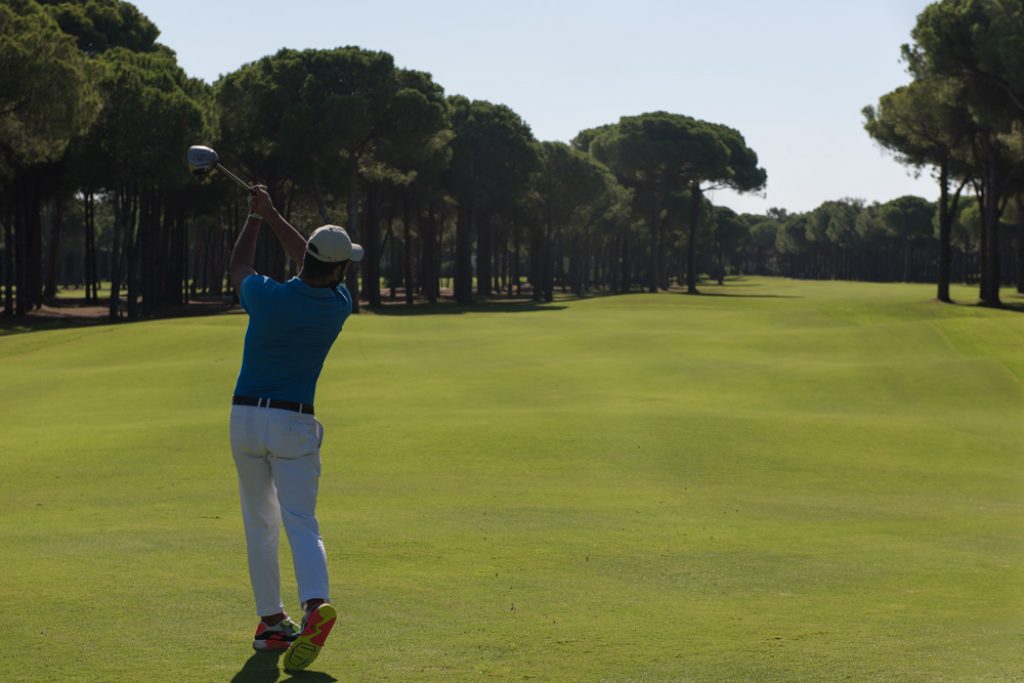
To correct an open clubface, practice making swings to keep the clubface perpendicular to the ground at impact. One drill you can do is to place a tee in front of the ball and then make swings trying to hit the tee without moving it.
To correct an out-to-in swing path, practice making swings to swing the club from the inside of the target line. One drill you can do is to set up two tees in a line, and then make swings trying to hit the ball between the tees.
Remember, the key to fixing a golf slice is to focus on two things: keeping the clubface at impact, and swinging the golf club from the inside of the target line.
If you can do these two things, you will be well on your way to hitting straighter and longer golf shots.
Tell me the cause of hooking.
Several different things can cause a golf hook. The most common is incorrect grip. If your grip is too weak, it can cause the clubface to close at impact, resulting in a hook. Other causes of a hook can include coming over the top of the ball or swinging too much from inside to out.
A hook can also be caused by several different factors with your clubs, including the loft, lie angle, or shaft stiffness.
If you think you may be hooked, there are a few things you can do to try and correct it.
One is to check your grip and make sure you’re not holding the golf club too tightly.
You also want to make sure you’re not coming over the top of the ball, but rather swinging from inside to out.
Finally, you can experiment with different clubs or club settings to see if that helps alleviate the hooking problem.
Is it better to hook or slice?
To be good at golf, you should remove your hook or slice. Both kinds of mistakes can be detrimental to achieving consistent scores.
The two swing flaw types should be re-examined in the field and practiced well. We prefer the hook over slices; we pick the hook.
Hooking may generally be fixed by slight tweaks, and Slice often needs sweeping adjustments. An interesting finding is that the young golfer often fights for hooks while the veteran golfer fights for slices.
Golf ball

At its root, a sliced shot is caused by the clubface arriving at impact with the golf ball in an open position. This may be due to setup or swing issues that cause the face to open, or to an outside-to-inside swing path that effectively opens the face by “wiping” or “swiping” across the golf ball, imparting “slice spin.” (Golf slice spin is a clockwise side-spin for right-handed golfers, and counter-clockwise for lefties.) Cutting across the ball at impact on an outside-to-inside swing path is also called “coming over the top.” Those are the two primary causes of a golf slice, and in combination can be deadly.
Open clubface + outside-to-inside swing path = big golf slice. If you have one or the other, it’s time for a major swing overhaul with the help of a qualified instructor.
An open clubface can often be corrected with a simple grip adjustment that strengthens the grip. Or it could be caused by swinging too far from the inside out, in which case you need to make a conscious effort to keep your arms close to your body on the backswing and resist the urge to “cast” the club at the ball on the downswing. It might be a combination of both.
An outside-to-inside swing path is often caused by swinging too much from the outside, which produces over-the-top swings that come across the ball. It can also be caused by a weak grip, which again produces an over-the-top downswing. The solution to this particular problem is twofold:
First, make a concerted effort to keep your arms close to your body on the backswing, and take the club inside on the way back.
Second, grip the club a little tighter to help you resist casting it at the ball on the downswing. If you have a problem with both an open clubface and an over-the-top swing, the grip adjustment is your best bet.
The ball position is critical to the success of your swing. The golf ball should be positioned on your front foot (left foot for left-handed golfers) with a driver. It’s simpler to get steep, have an incorrect weight shift, and lead the Golf Slice that we all despise if it’s further back in your stance.
A higher release angle and a lesser degree of loft will help you generate more carry on your drives. To get more launch, the ball must be pushed farther back on your front heel so you hit up on it and raise the launch angle. A greater forward placement not only aids in the learning process for stopping slicing with a driver but also adds distance. Keep in mind that much of golf is completed before you ever swing a club.
Check your grip first, and if that doesn’t help, try adjusting your ball position. You might need to do both to get rid of your slice for good. With a little practice, you’ll be hitting the fairway regularly in no time. That’s when the game becomes truly fun.
PlaneMate Trainer
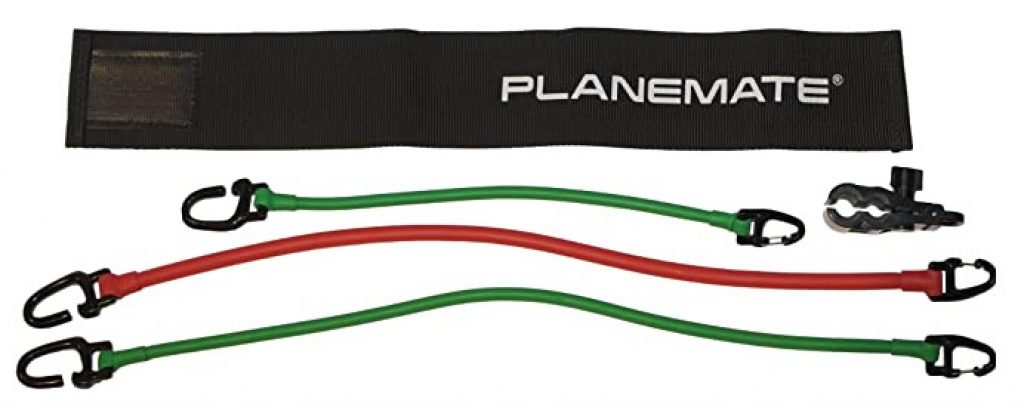
A square clubface will create a straight shot and a slightly closed one will help produce a draw. Do this 10-15 times on the range before hitting your driver on the range. This drill also works if you need to fix a slice on the golf course.
If you’ve had a few errant drives, on the tee box when other players are hitting shots, do this drill a few times. It should help you get back to the square and improve your swing during the round. 5.
If you slice the ball, chances are you’re like many golfers and probably have an over-the-top swing.
The PlaneMate Trainer is a great training aid for helping you keep your arms close to your body, and on the plane, throughout the golf swing.
The PlaneMate attaches to any club and provides instant feedback if you get out of position at any point in your swing. It’s simple to use and is great for helping you groove a proper on-plane golf swing.
Ball Flight

A fade on the other hand is a controlled ball flight in which the ball starts left of the target and fades back to and finishes at the intended target. There is little to no distance lost with a fade.
Some of the best players in history have hit a fade as their primary ball flight (Hogan, Nicklaus, Trevino). The amount of curve on a golf shot increases with club length and less loft. Since the driver has the longest shaft and lowest loft, it generally will slice the most and get you in the most trouble. Therefore, learning how to fix a slice can put you in play more often off the tee and make golf more enjoyable.
There are two main types of ball flight, the draw and the fade. The difference between the two is in how they start and finish in relation to your intended target line.
A draw starts out to the right of your intended target (for a right handed golfer) but then curves back towards the target and finishes left of where it started.
A fade starts out to the left of your intended target (again, for a right handed golfer) but then fades back towards the target and finishes right of where it started.
So, in order to hit a draw, you need to start the ball out to the right, and in order to hit a fade, you need to start the ball out to the left.
How to Stop Slicing a Driver or Irons?
When fixing a cut, it must be understood that it must be square or slightly closed with respect to the swing path to avoid the blade slipping.
The player’s club face will always slide unless the toe hits it. There are several options that can be changed; you need to choose the right one.
Golf Swing Changes to Fix a Golf Slice or Hook
Once you find out the cause of your slicing/hooking problem, you will have to fix that area of your body and wrist or the backside.
Swing Path
Do your best to take a square stance and aim straight at your target. When it comes to a golf slice, you can’t play it . You need to learn how to fix the slice with your driver. Pick your target and make an aggressive swing. Tip Swing Out At The Ball If you consistently hit a golf slice, your swing path is most likely from outside to inside . In other words, you swipe across the ball. Players that hit a draw or a hook do the opposite. They swing inside out. With this in mind, you want to eliminate the golf slice you need to train yourself to swing out at the golf ball. This will feel strange at
Swings in slow motion
When the golfer swings (in slow motion) the club to where it is parallel to the ground on the other side, the logo of the glove should be facing behind the golfer. Drill 2 – This drill helps the golfer feel the club path come from the inside to out: The golfer should set up normally, then before starting their swing, move their right foot straight back about 3 to 4 inches. The golfer should make swings and even hit shots with their right foot back to give them the feeling of swinging the club from the inside rather than from the outside.
Practice with Hula Hoop
A hula hoop is a great tool for testing your swing path. Place it around yourself and make sure that you can clear the net during one of these swings; if not, then something may need adjusting in order to improve accuracy!
Use a Mirror
Set up to a golf ball as you normally would and take your stance. Now, set up a mirror beside you so that you can see your reflection. Take your golf club and make some practice swings. As you do, pay attention to how the club is in relation to your body.
If your club is too much on the inside, you’ll see it in the mirror. Conversely, if it’s too much on the outside, you’ll also be able to tell. Try to make adjustments until your club is in the correct position at impact.
Use a Golf Ball
Another great way to fix a golf slice is to use a golf ball that has a dimple pattern that helps promote a draw. These balls are designed to reduce spin and help you hit the ball straighter.
The key is to get the ball in play more often, which is always a good thing.
Take Lessons
While it will take some time and effort, taking lessons is definitely the best way to fix your golf slice for good.
Take a 30-day trial of online training with Swing Man Golf Jaacob Bowden, PGA.
The Benefits of Fixing Your Golf Slice
Fixing your golf slice will undoubtedly improve your game. Not only will you be able to hit the ball straighter, but you’ll also add distance to your golf shots. If you can correct your golf slice, you’ll be well on your way to shooting lower scores and becoming a better golfer!
